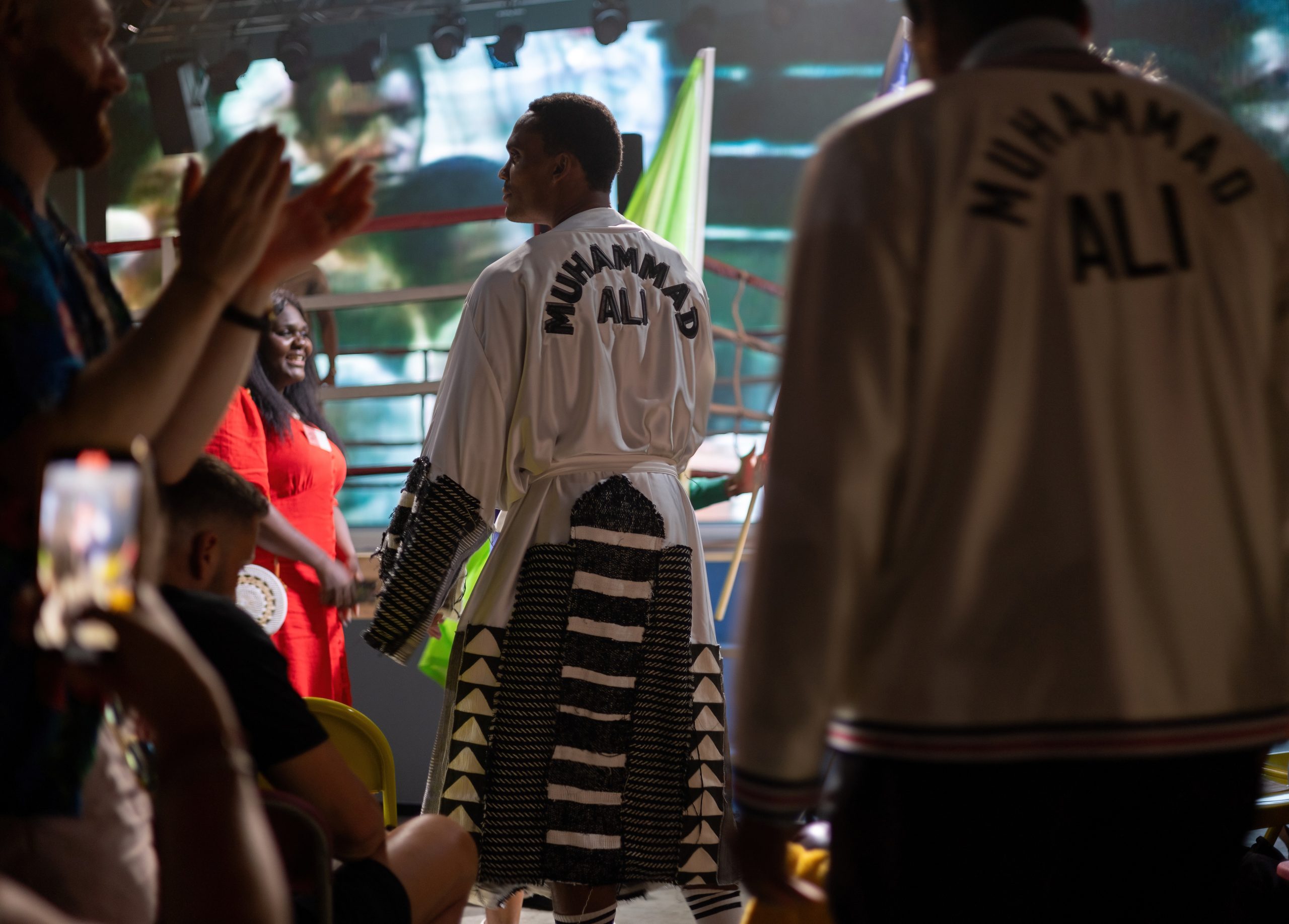The "Rumble in the Jungle" is one of the most iconic moments in boxing history. Held on October 30, 1974, this legendary match pitted two giants of the sport against each other: Muhammad Ali and George Foreman. Set in Kinshasa, Zaire (now the Democratic Republic of the Congo), the event was not just a battle of fists but also a clash of ideologies, styles, and cultures. The match went beyond being a sporting event; it became an international spectacle that brought together people from all walks of life, showcasing the powerful impact of boxing as a unifying force. In this blog post, we'll explore the historical context surrounding this unforgettable showdown.
Historical Context of the Match

The Rumble in the Jungle took place during a unique time in both sports and global history. The 1970s were marked by social upheaval, civil rights movements, and a re-examination of American values, which deeply influenced the backdrop of this match.
One of the most significant aspects was the rise of Muhammad Ali as a cultural and political icon. Having been stripped of his title in 1967 for refusing to be drafted into the Vietnam War, Ali had become a symbol of resistance against the status quo. His return to the ring in 1970 paved the way for a redemption story that would culminate in his fight with Foreman.
On the other side, George Foreman was an emerging powerhouse, known for his explosive punching power and brutal victories, including a shocking win over Joe Frazier in 1973. Many believed he would easily dethrone Ali, especially considering that Foreman had been undefeated in his professional career up until that point.
The match itself was groundbreaking, illustrating the following key points:
- Location: The fight took place in Zaire, marking a significant moment for African pride and international attention in sports.
- Global Reach: The event was broadcasted to millions worldwide, uniting fans through sports regardless of geographical boundaries.
- Political Undertones: Ali's persona resonated with the struggles many faced during the civil rights era, while Foreman represented a different path of American identity.
In summary, the Rumble in the Jungle was not just about boxing; it was a multi-faceted event that reflected the political, social, and cultural climate of the time. The legacy of this match continues to resonate, making it a significant chapter in the annals of sports history.
Details of the Match Structure

The “Rumble in the Jungle,” held on October 30, 1974, was not just another boxing match; it was a meticulously structured event that showcased the pinnacle of the sport. This legendary bout took place in Kinshasa, Zaire, and saw the brilliant Muhammad Ali face off against the fearsome George Foreman.
The match followed the traditional boxing format of 15 rounds, each lasting three minutes. This structure was standard at the time and set the stage for an epic encounter. Here’s a breakdown of what the round structure entailed:
- Round 1-5: These initial rounds were crucial. Both fighters were sizing each other up, gauging strengths and weaknesses. Foreman employed his brute strength, while Ali danced and floated around the ring.
- Round 6-10: This is where the “rope-a-dope” strategy came into play. Ali leaned against the ropes, inviting Foreman to throw punches while conserving his energy. It was a bold and risky tactic.
- Round 11-15: As fatigue set in, Ali unleashed his plan. Rounds 11 and 12 saw a dramatic shift. Foreman had worn himself out, and Ali capitalized, landing powerful punches that ultimately led to Foreman’s downfall.
The match concluded in the eighth round, but the entire round structure was critical to the fight. It showed not just the physical endurance of the fighters, but their tactical decision-making as well. The way the rounds were navigated contributed significantly to Ali's historic victory.
Importance of Rounds in Boxing

Understanding the significance of rounds in boxing is fundamental to appreciating the sport itself. Rounds dictate the pace, strategy, and outcome of a match. Each round serves as a miniature contest in a larger battle, allowing both fighters to exhibit skill and resilience. Here’s why rounds matter:
- Tactical Adjustments: Each round gives boxers a chance to assess their opponent. They can adapt their tactics based on what they see, tweaking their approach between rounds to exploit weaknesses.
- Energy Management: Boxers must wisely manage their energy over the course of the match. A round's intensity can greatly influence a fighter's stamina. Finding a balance between aggression and defense is crucial.
- Scoring System: Rounds are crucial in the judging process. Each round is scored independently, which means a fighter can win the match by winning more rounds even if the fight extends over many.
Moreover, rounds add a dramatic narrative to fights; the ebb and flow create an engaging spectacle. As fans, we often reflect on pivotal moments that occurred within specific rounds, building tension as fighters strive to outdo each other.
In summary, rounds form the backbone of boxing matches. They shape not only the strategy but also the story of the fight, turning every bout into a saga of skill, heart, and endurance.
Understanding the Rounds of the Legendary Rumble in the Jungle Match
The Rumble in the Jungle, held on October 30, 1974, is one of boxing's most iconic spectacles, featuring the legendary fighters Muhammad Ali and George Foreman. This match was not only a test of skill and strength but also a captivating story of strategy and psychological warfare. The Rumble consisted of 15 rounds, each moment brimming with significance and drama.
*Round Breakdown*:
| Round | Key Events | Notes |
|---|---|---|
| 1 | Foreman storms out strong, Ali manages to avoid punches. | Ali sets the pace with his footwork. |
| 2 | Foreman continues his aggressive style. | Foreman's punches are powerful; Ali employs the "rope-a-dope" technique. |
| 3 | Ali begins to taunt Foreman, inviting him to throw punches. | Ali's strategy to tire Foreman is beginning to unfold. |
| 4 | More dominance from Foreman, but Ali remains evasive. | Foreman seems to be losing energy. |
| 5-6 | Ali's strategy shows effectiveness; Foreman slows down. | The "rope-a-dope" strategy is in full effect. |
| 7 | Ali lands a powerful combination, catching Foreman off guard. | Ali starts to increase his volume of punches. |
| 8 | The momentum shifts as Ali controls the pace. | Foreman's defenses begin to crumble. |
| 9 | A huge uppercut from Ali knocks Foreman down. | The tide has undeniably turned. |
| 10-15 | Foreman struggles, Ali follows through with relentless punches. | The fight ends with Ali as the victor in Round 8. |
Through his strategic mastery and heart, Ali emerged victorious in a match that not only defined his legacy but also impacted the world of sports forever. The Rumble in the Jungle remains a testament to the brilliance of Ali and the indomitable spirit of competition.
Conclusion: The legacy of the Rumble in the Jungle continues to inspire athletes worldwide, illustrating that in the face of overwhelming odds, strategy and mental fortitude can triumph over brute strength.
 admin
admin








